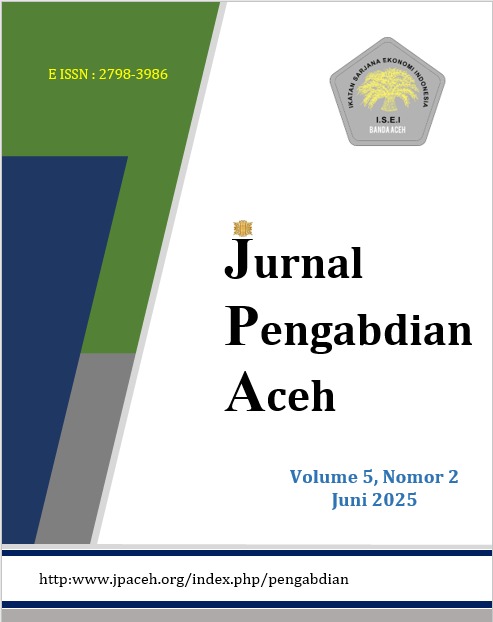Peningkatan Produktivitas dan Ekonomi Kelompok Tani Tiram Melalui Budidaya Tiram Sistem Apung di Desa Lamnga Aceh Besar
Keywords:
Oyster aquaculture, floating system, R/C RatioAbstract
Lamnga Village possesses significant natural potential, particularly in the fisheries and marine sectors. However, the utilization of non-agricultural land, specifically in the coastal mangrove forest area, for oyster cultivation remains underdeveloped. Several challenges hinder progress, including the continued use of traditional farming methods, low community income, limited market access, and insufficient diversification of income sources. To enhance the economic well-being of the local community, a community engagement program is proposed. This initiative aims to provide technical assistance and mentoring to support the development of oyster aquaculture enterprises in Lamnga Village, Aceh Besar Regency. The program will be implemented using the Participatory Rural Appraisal (PRA) method. The community service team will introduce a modern floating culture system for oyster farming, employing both vertical and horizontal suspended layouts. Findings from a preliminary questionnaire suggest that the majority of respondents from coastal communities are already familiar with oyster farming practices. However, many lack access to essential equipment such as suspension ropes, culture racks, and protective nets to guard against marine predators. To assess the economic feasibility of the floating oyster aquaculture system in Lamnga Village, a Revenue-to-Cost Ratio (R/C Ratio) analysis was conducted. The analysis produced an R/C Ratio of 1.5, indicating that the venture is economically viable and has the potential to generate profit. Additionally, results from water quality assessments confirm that environmental conditions in the area are suitable for oyster aquaculture.





